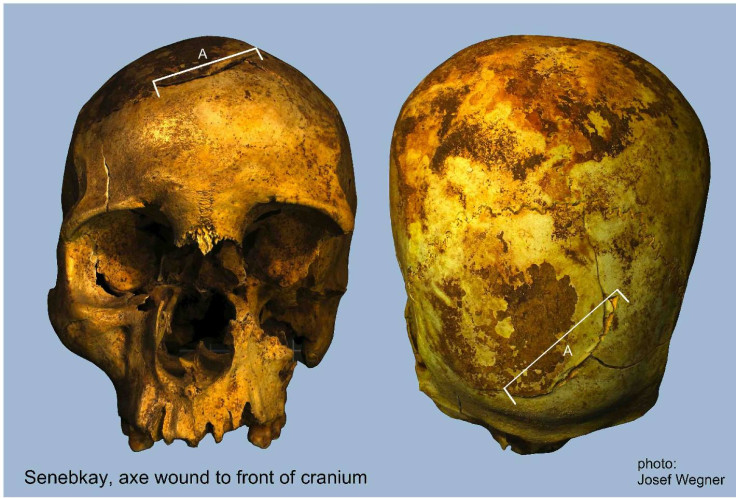Ancient Egypt: Warrior Pharaoh Senebkay was hacked to death with axes
Pharaoh Senebkay, a ruler from Ancient Egypt whose tomb was only discovered in January 2014, was brutally killed in battle, new research suggests.
The burial chamber of a little known pharaoh called Woseribre Senebkay, who reigned over 3,600 years ago, was found 300 miles south of Cairo last year.
The pharaoh has never featured in ancient Egyptian history books, but Senebkay's name was found inscribed in hieroglyphics written inside a royal cartouche.
After studying the Pharaoh's remains a team from the University of Pennsylvania and Dr Josef Wegner, in conjunction with Egypt's Supreme Council of Antiquities, has reconstructed the Abydos Dynasty king's last moments.

It is thought that Senebkay was the first Pharaoh to die in battle in about 1650 BC. What's more, the team of scientists identified that he had 18 wounds on his body that would have been sustained before his death, including "axe blows" to the head.

Dr Wegner said: "The king's skeleton has 18 wounds that penetrated to the bone. The trauma includes major cuts to his feet, ankles, and lower back. Multiple blows to Senebkay's skull show the distinctive size and curvature of battle axes used during Egypt's Second Intermediate Period."
They also concluded that, due to the angles of the wounds, Senebkay would have probably been on a horse when he was first hit.
"His assailants first cut his lower back, ankles and feet to bring him to the ground and then finished him with axe blows to the skull," continued Dr Wegner.
"Horseback riding may have played a growing role in military movements during this era even before the full advent of chariot technology in Egypt.
"It remains unclear whether he died in battle against the Hyksos kings who then ruled northern Egypt, or possibly enemies in the south"
The Abydos Dynasty
According to archaeologists, the discovery of Senebkay proves the existence of an independent Abydos dynasty, which was first hypothesised by Egyptologist K. Ryholt in 1997 but not confirmed until last year.
The evidence for it is about 16 royal tombs spanning the period 1650 to 1600 BC and found alongside the burial of Senebkay, who appears to be one of the earliest kings of the Abydos Dynasty.
Abydos Dynasty existed in the southern part of Middle Egypt between the larger and prosperous kingdoms of Thebes and the Hyksos in northern Egypt.
Senebkay's tomb also provides evidence that Abydos Dynasty had comparatively weak economy because objects that had been extracted from previous tombs and reused in a later tomb were found.
© Copyright IBTimes 2025. All rights reserved.






















